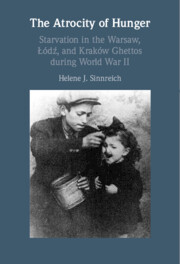
-
- You have access
- Open access
- Cited by 2
-
Cited byCrossref Citations
This Book has been cited by the following publications. This list is generated based on data provided by Crossref.
Barinov, Igor I. 2024. P. Markiewicz. Unlikely Аllies: Nazi German and Ukrainian Nationalist Collaboration in the General Government During World War II. Purdue University Press, 2021. 347 p.. Slavianovedenie, p. 136.
Kaplan, Marion and Aleksiun, Natalia 2025. The Cambridge History of the Holocaust. p. 8.
- Publisher:
- Cambridge University Press
- Online publication date:
- February 2023
- Print publication year:
- 2023
- Online ISBN:
- 9781009105293
- Creative Commons:
-
This content is Open Access and distributed under the terms of the Creative Commons Attribution licence CC-BY-NC-ND 4.0 https://creativecommons.org/creativelicenses


